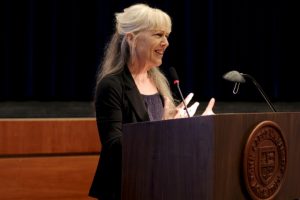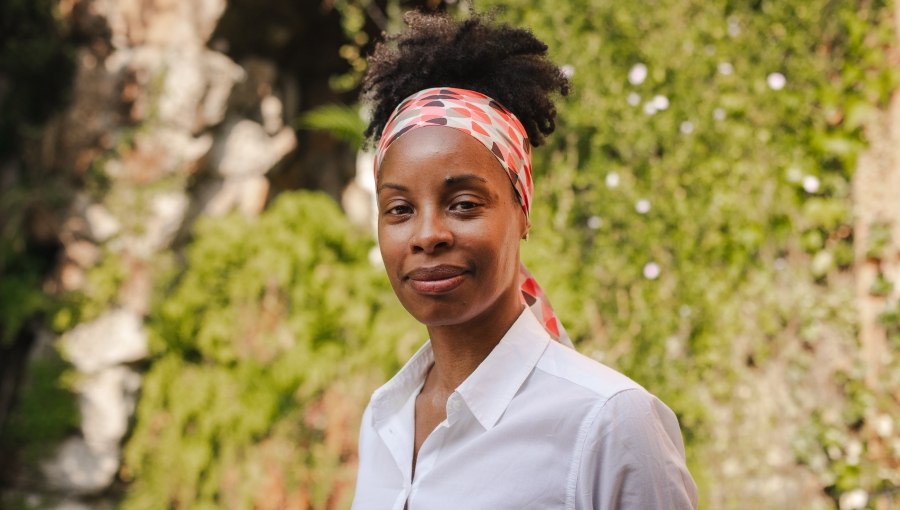JCU Institute for Creative Writing Welcomes Novelist Susan Minot
by Marialaura Grandolfo
On June 15, 2016, the Institute for Creative Writing and Literary Translation presented a reading by novelist Susan Minot, 2016 Writer in Residence at John Cabot. Minot read from her latest work, Thirty Girls, a novel about a group of Ugandan young girls abducted by the guerrilla group and cult Lord’s Resistance Army.
Minot is an award winning novelist, poet, screenwriter, and short story writer. Born and raised in Massachusetts, she graduated from Concord Academy, studied writing and painting at Brown University, and graduated with an M.F.A. in creative writing from Columbia University. Her first work, Monkeys, was widely published and awarded the Prix Femina Étranger in France. She also wrote Lust and Other Stories, Evening, and Poems 4 A.M. She is the author of the screenplay for Bernardo Bertolucci’s 1996 film Stealing Beauty, and co-wrote the screenplay for Michael Cunningham’s film Evening, based on her eponymous novel.
Minot was introduced by her brother and fellow novelist and writer George Minot, who teaches creative writing at JCU. He recounted how self-editing and storytelling were always a part of their family life, even at a time when they had not yet approached writing.
The writing process. Susan Minot began by stating that writing takes quite a long time, “longer than one’s appetite for the subject would like it to.” She compared the act of writing to that of sculpting. In the beginning, writing is like taking clay out of the earth. This process is relatively easy, and constitutes 10-15% of the work, but its result is approximate. Then comes the shaping of the sculpture, from its basic elements to its finest details. The latter part may strain beginning writers, but talent can only thrive when accompanied by the determination to bring a work to its completion.
Thirty Girls. Thirty Girls follows two protagonists: Esther, one of the abducted Ugandan girls who manages to escape and struggles to overcome her trauma, and Jane, an American journalist who travels to Africa to tell the story of girls like Esther and undergo a journey of self-discovery. Minot pointed out that her decision to juxtapose the stories of two people from antipodal backgrounds aimed at communicating a universal message. Pain, she argued, is a fundamentally human experience. Although traumas come in varying degrees of gravity, all experiences are equally valid. Instead of thinking in terms of a “hierarchy of suffering,” she suggested, we should regard pain as an opportunity to connect with others.
During the Q&A session, a member of the audience asked Minot about her choice of narrator. Minot replied that she decided to use the first person for the character of Esther precisely because she knew it would be more of a challenge, because Esther’s experience is quite far from her own.
When asked about how long it takes her to start writing after researching her topic, Minot explained that in her experience the writing starts right away, while the research occurs at various, often casual points. In writing Thirty Girls, she wanted to keep as close to the facts as possible, while stripping the narrative of excessive or inaccessible details to allow readers to empathize with the characters.
On giving/receiving feedback. Returning to her initial sculpting metaphor, Minot explained that she tends to present her work to others only when the features of her statue are reasonably defined. She suggested, also, that beginning writers should absolutely distribute their work and ask for opinions, but that they should prioritize feedback that inspires them to keep going. As a writer, “you always need encouragement,” she concluded.






